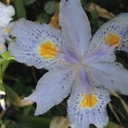Rapid identification of "mad honey" from Tripterygium wilfordii Hook. f. and Macleaya cordata (Willd) R. Br using UHPLC/Q-TOF-MS.
Palabras clave
Abstracto
Cases of honey poisoning have been reported widely, meaning there is a need for methods that detect "mad honey" or honey contaminated with plant-derived toxins to protect human health. In this study, we compared whole flower extracts and honey from Tripterygium wilfordii Hook. f. (TwHf) and Macleaya cordata (Willd) R. Br (McRB) using QuEChERS (quick, easy, cheap, effective, rugged, and safe) and ultra-high-performance liquid chromatography/quadrupole time-of-flight mass spectrometry (UHPLC/Q-TOF-MS). The results revealed several compounds common to whole flowers and honey samples. Triptolide and protopine were selected as potential markers for identifying "mad honeys" from these plants. The developed method can easily detect different honey varieties that were spiked with 5% TwHf and McRB honey samples. Additionally, 90 commercial honey samples were analyzed and determined as free from contamination. The method described in this report could be useful for studies on honey from other poisonous nectar and pollen plants.



